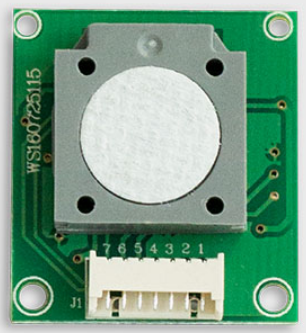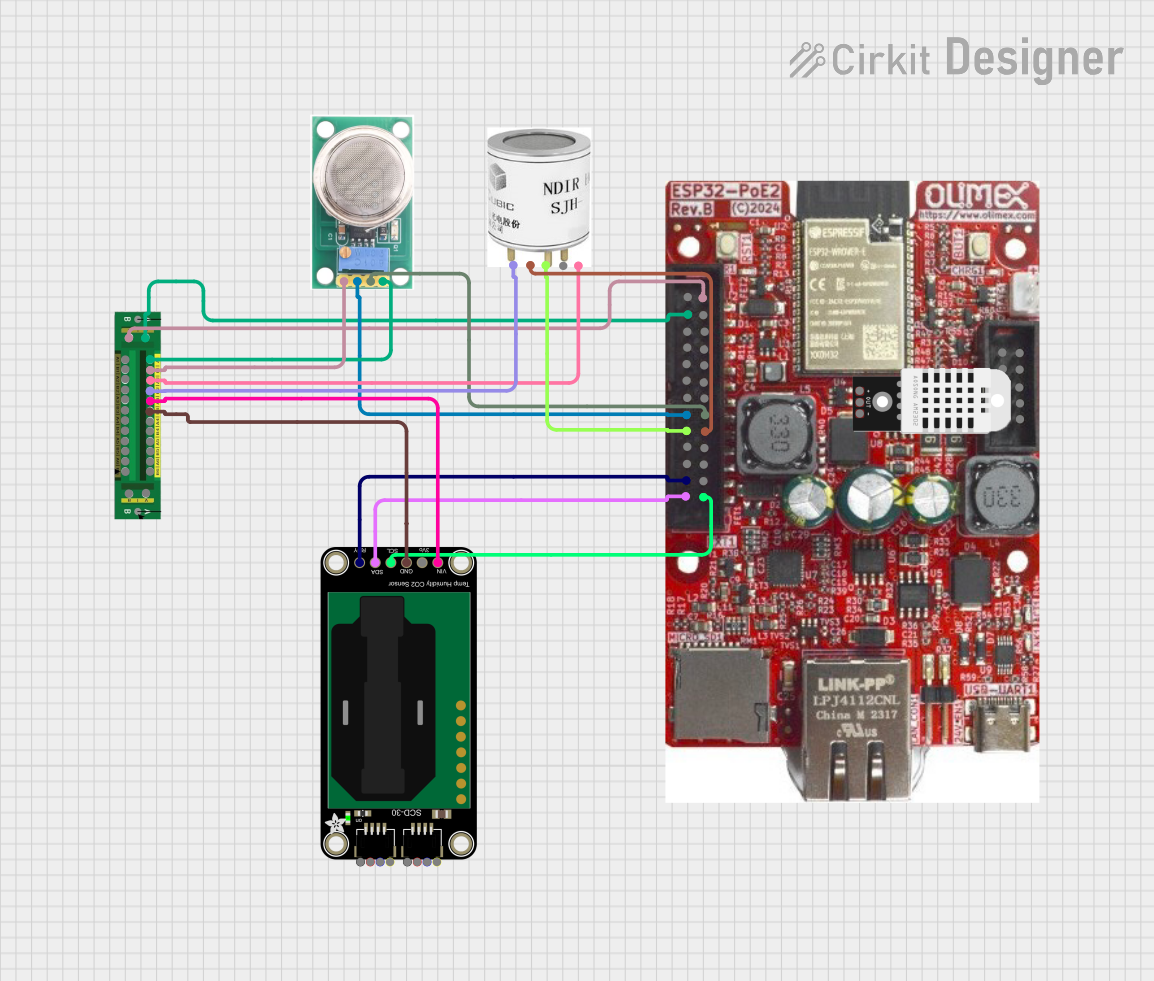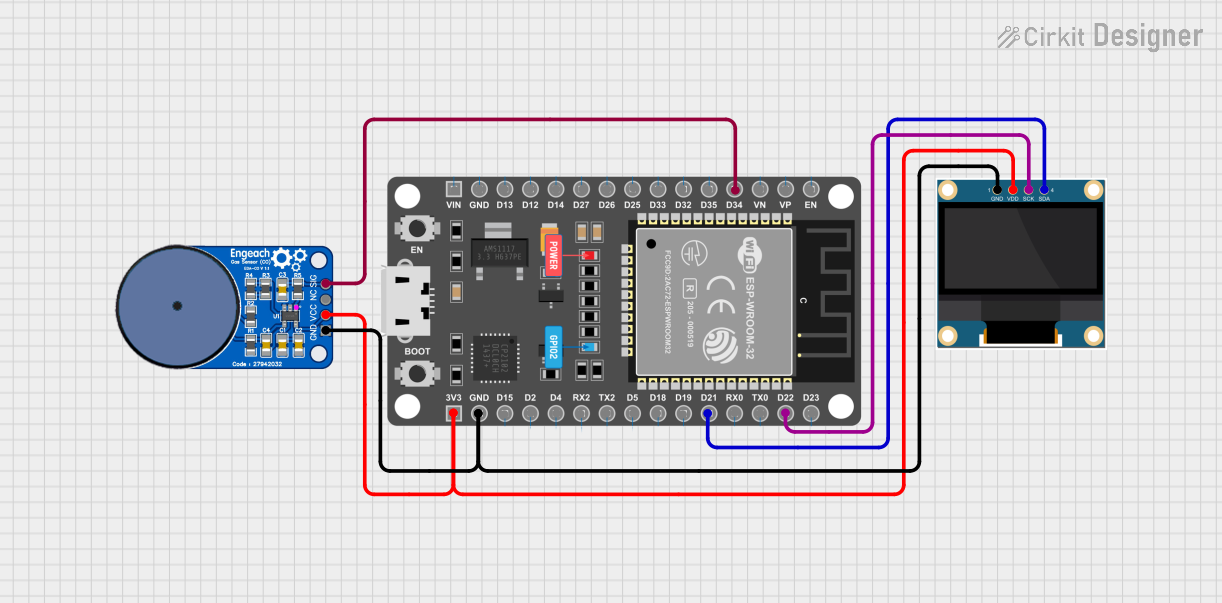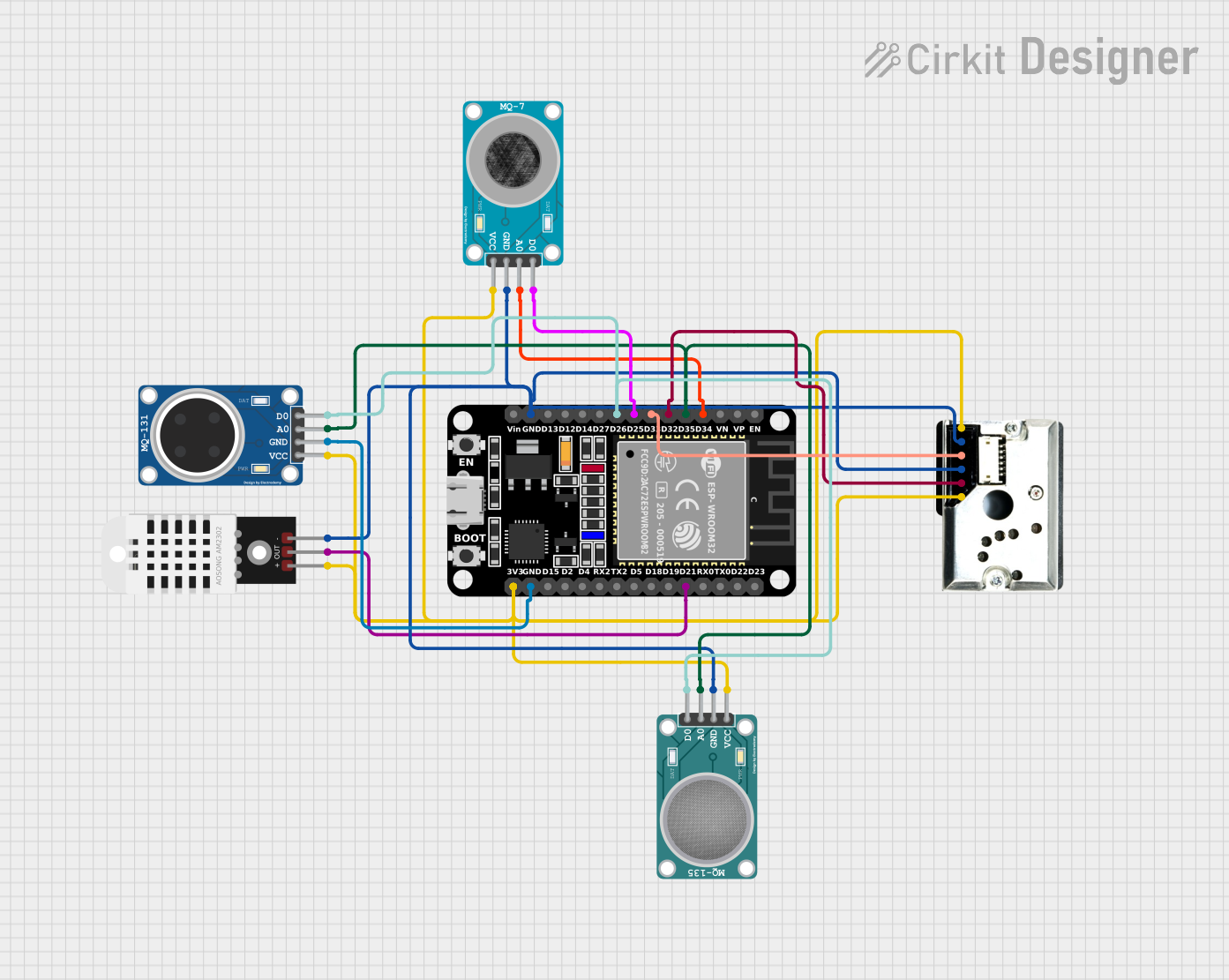
How to Use ZE08-HCHO: Examples, Pinouts, and Specs

 Design with ZE08-HCHO in Cirkit Designer
Design with ZE08-HCHO in Cirkit DesignerIntroduction
The ZE08-HCHO is a formaldehyde gas sensor designed to detect the concentration of formaldehyde (HCHO) in the air. It operates using an electrochemical sensing principle, ensuring high sensitivity and accuracy. The sensor provides both analog and digital outputs, making it versatile for integration into various systems. Its compact design and reliable performance make it ideal for applications such as indoor air quality monitoring, industrial safety, and environmental testing.
Explore Projects Built with ZE08-HCHO

 Open Project in Cirkit Designer
Open Project in Cirkit Designer
 Open Project in Cirkit Designer
Open Project in Cirkit Designer
 Open Project in Cirkit Designer
Open Project in Cirkit Designer
 Open Project in Cirkit Designer
Open Project in Cirkit DesignerExplore Projects Built with ZE08-HCHO

 Open Project in Cirkit Designer
Open Project in Cirkit Designer
 Open Project in Cirkit Designer
Open Project in Cirkit Designer
 Open Project in Cirkit Designer
Open Project in Cirkit Designer
 Open Project in Cirkit Designer
Open Project in Cirkit DesignerCommon Applications
- Indoor air quality monitoring in homes, offices, and public spaces
- Industrial safety systems to detect harmful formaldehyde levels
- Environmental monitoring and research
- Air purifiers and HVAC systems for real-time air quality feedback
Technical Specifications
The ZE08-HCHO sensor is designed for ease of use and reliable performance. Below are its key technical details:
| Parameter | Value |
|---|---|
| Operating Voltage | 3.7V to 5.5V |
| Output Signal | UART (digital) and DAC (analog) |
| Detection Range | 0 to 5 ppm (parts per million) |
| Resolution | 0.01 ppm |
| Response Time | ≤ 60 seconds |
| Operating Temperature | -20°C to 50°C |
| Operating Humidity | 15% to 90% RH (non-condensing) |
| Power Consumption | ≤ 0.5W |
| Dimensions | 31mm × 31mm × 13mm |
| Weight | ~6g |
Pin Configuration and Descriptions
The ZE08-HCHO sensor has a 4-pin interface for power and data communication. The pinout is as follows:
| Pin | Name | Description |
|---|---|---|
| 1 | VCC | Power supply input (3.7V to 5.5V) |
| 2 | GND | Ground connection |
| 3 | UART_TX | UART transmit pin for digital data output |
| 4 | DAC_OUT | Analog voltage output proportional to HCHO level |
Usage Instructions
How to Use the ZE08-HCHO in a Circuit
- Power Supply: Connect the VCC pin to a 3.7V to 5.5V power source and the GND pin to ground.
- Data Output:
- For digital output, connect the UART_TX pin to the RX pin of a microcontroller (e.g., Arduino).
- For analog output, connect the DAC_OUT pin to an ADC (Analog-to-Digital Converter) input of your microcontroller.
- Warm-Up Time: Allow the sensor to warm up for at least 3 minutes after powering it on to ensure accurate readings.
- Data Reading:
- For UART communication, the sensor transmits data in a specific protocol format.
- For analog output, measure the voltage on the DAC_OUT pin and convert it to a formaldehyde concentration using the sensor's datasheet calibration curve.
Important Considerations and Best Practices
- Avoid Condensation: Ensure the sensor is not exposed to high humidity or condensation, as this can affect its performance.
- Calibration: Periodically calibrate the sensor in a clean air environment to maintain accuracy.
- Placement: Install the sensor in a location with good airflow for accurate detection of formaldehyde levels.
- Power Stability: Use a stable power supply to avoid fluctuations in sensor readings.
Example: Connecting to an Arduino UNO
Below is an example of how to connect the ZE08-HCHO to an Arduino UNO and read data via UART:
Wiring Diagram
| ZE08-HCHO Pin | Arduino UNO Pin |
|---|---|
| VCC | 5V |
| GND | GND |
| UART_TX | D2 (Digital Pin 2) |
Arduino Code
#include <SoftwareSerial.h>
// Define RX and TX pins for software serial communication
SoftwareSerial mySerial(2, 3); // RX = Pin 2, TX = Pin 3
void setup() {
Serial.begin(9600); // Initialize hardware serial for debugging
mySerial.begin(9600); // Initialize software serial for ZE08-HCHO
Serial.println("ZE08-HCHO Sensor Initialized");
}
void loop() {
if (mySerial.available()) {
// Read data from the sensor
String sensorData = "";
while (mySerial.available()) {
char c = mySerial.read();
sensorData += c;
}
// Print the received data to the Serial Monitor
Serial.println("Sensor Data: " + sensorData);
}
delay(1000); // Wait 1 second before reading again
}
Troubleshooting and FAQs
Common Issues and Solutions
No Data Output
- Cause: Incorrect wiring or power supply.
- Solution: Verify the connections and ensure the sensor is powered with 3.7V to 5.5V.
Inaccurate Readings
- Cause: Insufficient warm-up time or sensor contamination.
- Solution: Allow the sensor to warm up for at least 3 minutes. Clean the sensor environment and recalibrate if necessary.
Fluctuating Readings
- Cause: Unstable power supply or environmental interference.
- Solution: Use a regulated power supply and avoid placing the sensor near strong electromagnetic sources.
FAQs
Can the ZE08-HCHO detect gases other than formaldehyde?
- No, the sensor is specifically calibrated for formaldehyde detection and may not provide accurate readings for other gases.
How often should the sensor be calibrated?
- Calibration frequency depends on usage conditions. For typical indoor use, calibrate every 6 months.
What is the lifespan of the ZE08-HCHO sensor?
- The sensor has an estimated lifespan of 2 years under normal operating conditions.
Can I use the sensor outdoors?
- The sensor is designed for indoor use. Outdoor use may expose it to extreme conditions, reducing its accuracy and lifespan.